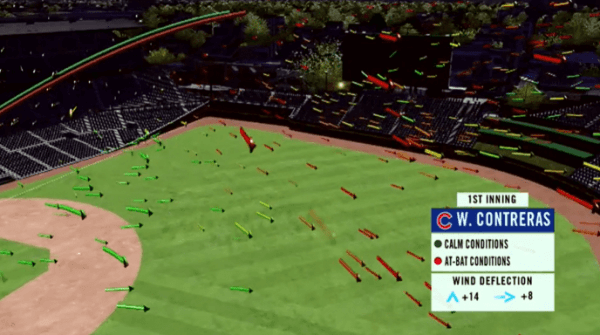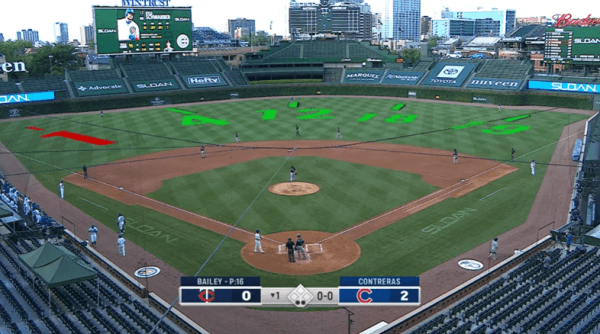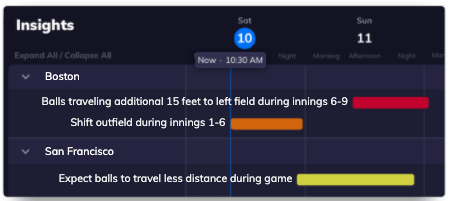The MLB is back! Are things a bit different this year? Certainly.
No live fans. Masks on base. But underneath it all, the game is back in all of its glory, being broadcast to millions of fans around the world.
In addition to the changes this season at the stadiums, since watching games on TV is the only way for people to see games, the pressure is on for media companies and announcers to delight viewers with interactive and compelling content.
That’s why we’re excited to announce our partnership with Weather Applied Metrics and the Marquee Sports Network to bring the most innovative media analytics content for the Chicago Cubs broadcasts at Wrigley Field!
Powered by Tomorrow.io’s weather intelligence platform, announcers can now visually show how the weather is directly impacting games in real-time. For instance, Wilson Contreras recently hit a home run during a Cubs game versus the Minnesota Twins. On that particular night, however, the winds added an additional 15 feet to how far the ball traveled on the hit in that particular inning. If there hadn’t been any wind blowing, the ball would have only traveled as far as the warning track for what could have been a routine out. Had the pitcher known about the wind impact, how might that have impacted the pitching strategy against Contreras?
As you can see below, announcers now have access to weather impact across the field at a hyperlocal level on any given day in addition to real-time impact.
Implementing a weather strategy at the MLB level can have a meaningful impact on wins. The beauty of this partnership is it allows for teams and media partners alike to better understand where balls are most likely to be hit in any given inning and better position players to be in the right place to make a play. Having access to these types of analytics can provide critical competitive intelligence when planning team strategy in a given series at home or on the road.
Here are just a few other ways in which weather impacts baseball games, and the distance a baseball will travel:
- Temperature – A baseball will travel further in warm air due to lower density
- Wind speed and wind direction – Impacts how far a ball will travel, and can change frequently during games
- Humidity – The higher the humidity, the more likelihood balls will travel further distances
With Tomorrow.io, you can easily keep track of how the weather is going to impact games in advance, in addition to how games are being impacted in real-time. Below is an example of our predictive insights dashboard with “mock” impact examples for the Boston Red Sox at Fenway Park and San Francisco Giants at Oracle Park.
As you can see, the dashboard can track any type of weather impact for games. You can set-up alerts based on your preferences to know the impact of weather on ball travel distances, or go one step further and assign specific instructions such as “shift outfield to X.” These types of predictive analytics can also be applied to most any sport being played outside. If you work in professional sports or the media industry and would like to learn more about how Tomorrow.io can help, we’d love to chat.


















